
Easily Mix Two Different Types of Pasta
The other day, while thinking about pasta, I had the idea to share simple thoughts I’ve had that make my day easier in case you haven’t yet thought the same. I use today’s simple trick whenever I need to make a large batch of pasta and only have mismatched bags left.
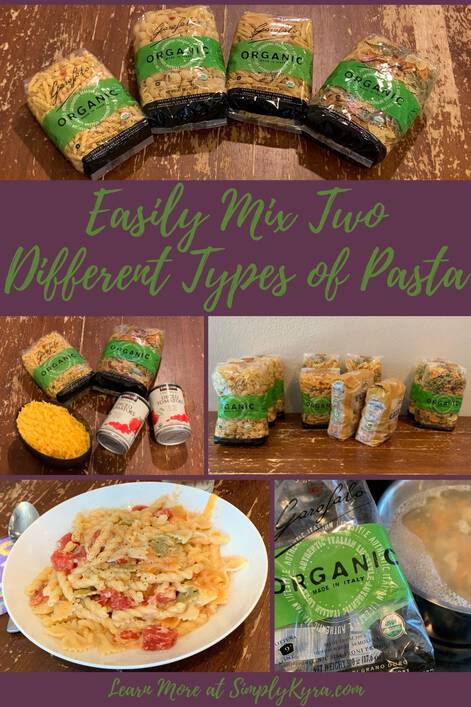
The only thing more fun, for my kids, than having pasta for dinner is when I combine two favorite types of pasta together. This started several years ago when, in a bind, I had to try to combine two mismatched packages of pasta together although they had different cook times. It turned out great and the girls loved it. Now when I want to make two pounds of pasta, whether we have company over or I just want to have leftovers, I’m not concerned when there isn’t a set of matching boxes or bags as I know I can combine two of them together with reliable results.
First, for this to work properly, you need to reliably know how long your pasta will need to be boiled for to be cooked to your liking. If you’ve made a specific brand of pasta a lot you’ll know whether you can trust the number printed on the packaging or how you’ll need to adjust that number. For this you’ll want to go by the number of minutes you know the pasta needs to be boiled for.
In this particular example I’ll be using the pasta we buy from Costco. My normal process involves bringing the pot of unsalted water to a heavy boil, dumping the pasta in, immediately setting the time to the larger of the two numbers on the package, leaving the burner on high until it vigorously boils again, and then bringing it down to medium (low if it’s about to boil over and then up to medium again) until the timer goes.
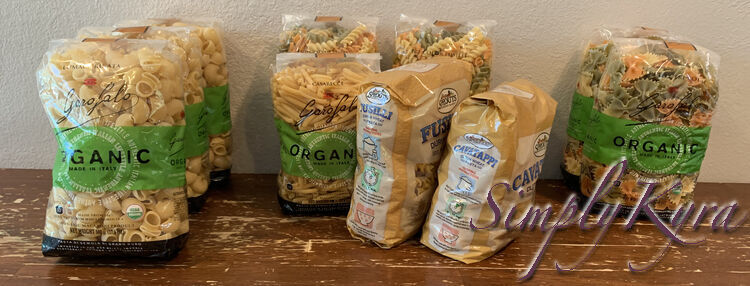
When I only have random bags of pasta left I can sort them based on their cook time that I know I’ll need to boil them for. That way, if there’s two or more bags of pasta with matching cook times it’s as simple as grabbing those two matching bags. When there aren’t any bags with matching cook times I can easily grab two different ones and stagger when I start boiling each bag of pasta so they’re done at the same time. Normally I attempt to use the same brand when doing this but I have mixed two brands together once or twice and had it work out.
Just a warning: when combining two types of pasta I make sure to taste test both kinds to confirm that both are done at the same time. If one of them is too undercooked I boil both for longer so the lesser cooked one is el dente and the other one is a bit more done.
In this case I grabbed two bags of pasta that were as far apart in cook times as I could manage. The single hued gemelli pasta only takes nine minutes to boil while the tricolored farfalle (bowtie) pasta takes a whole fifteen minutes.
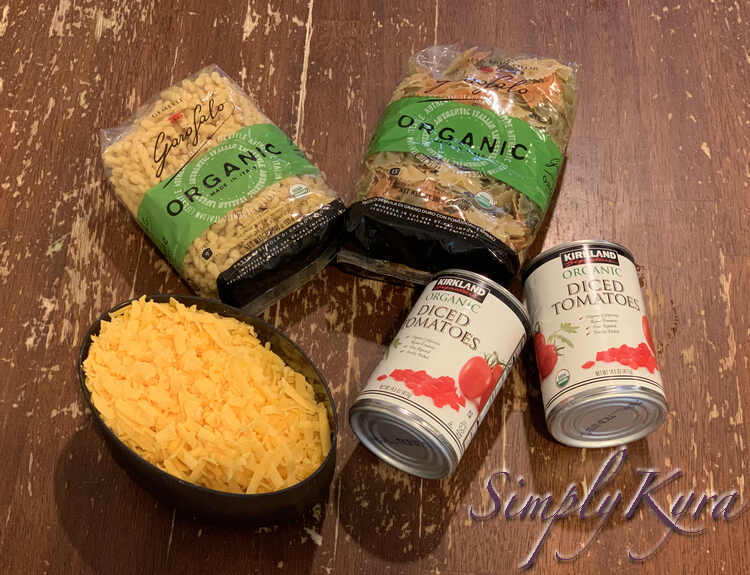
While a large pot of water comes to a boil I stop to do some quick math. I need to find the difference in cook times between the two bags of pasta that I chose. In this example the difference between the two types of pasta is six minutes: 15-9=6. This means that once the water comes to a hard boil I toss the pasta that takes the longest time in (fifteen minutes), set the timer to the difference between the two (six minutes), and stir the pasta. Once the timer goes off I throw the second bag in (nine minutes), set the timer to it’s cook time (nine minutes), and give it another stir.
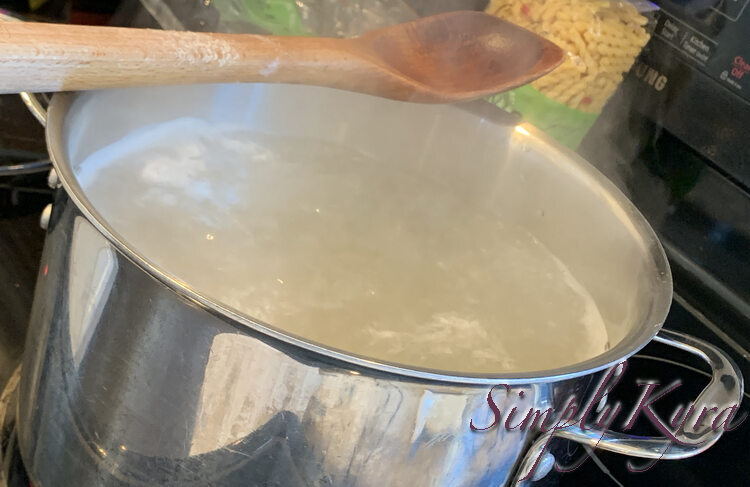
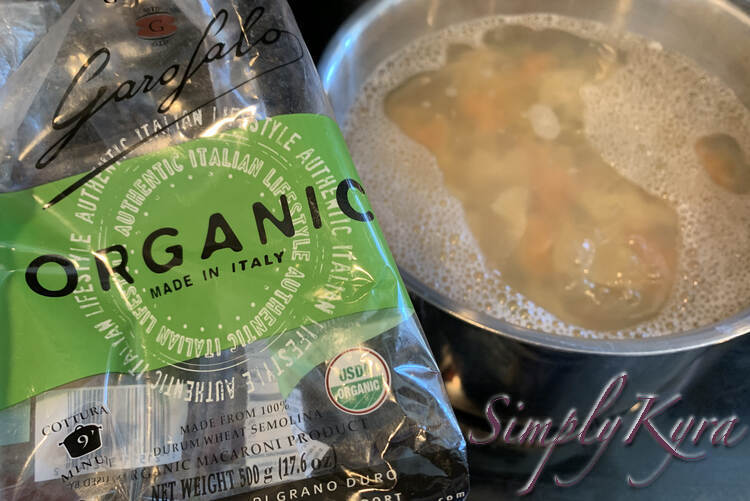
Once the final timer goes off I taste test both pasta types and confirm that they’re both done. I then strain and follow whatever steps I need to finish the recipe I’m making. In this case I was making Pasta, Tomato, and Cheese so I combined the strained pasta with milk, canned tomatoes, and grated cheddar cheese. Other times I’ve left this plain, added some avocado oil, mixed it with baked cherry tomatoes and feta, topped it with meat or tomato sauce, turned it into a lasagna, or used it with taco meat. There are so many different options!
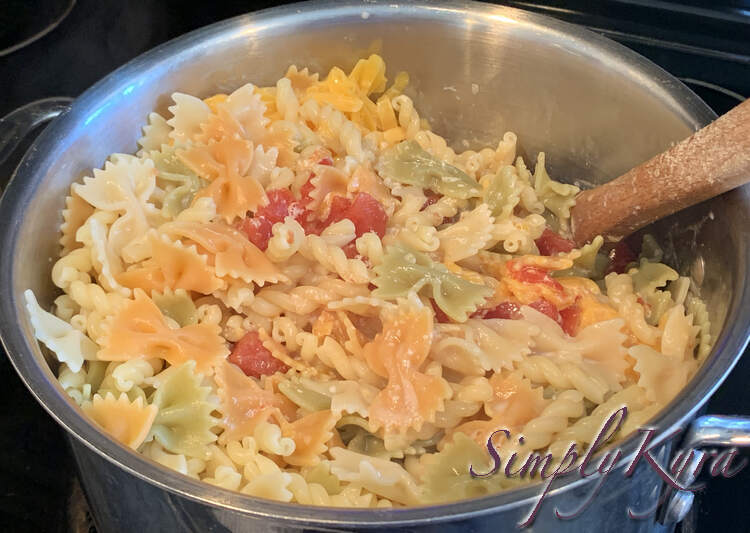
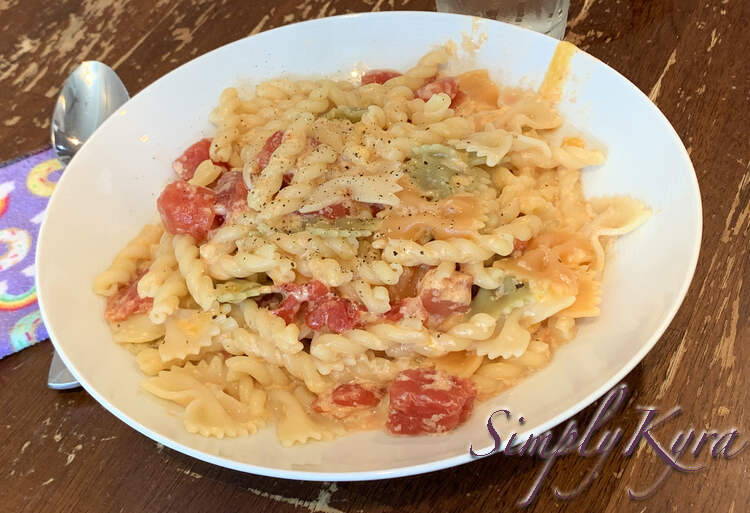
And with that the multi-package pasta is done. I’ve only combined two bags of pasta but I’m assuming, if your pot is big enough, you could do more at once.
For example if you had three bags of pasta with cook times of 4 minutes, 8 minutes, and 10 minutes this is what I’d do. I’d bring the water in the pot to a boil, put the pasta with the largest boil time (10 minutes) in, boil for the difference between that and the lesser one (10-8=2) so in this case two minutes, add the middle one (8 minutes), boil for the difference between that and the smallest boil time (8-4=4) so four minutes, toss the last bag in, and boil for the final cook time of four minutes. The more bags you add there’d be more difficulty so using matching bags so there’s only one or two cook times would be the simplest.
I hope that this simple concept helps you out whether you’ve thought of it before or you haven’t yet come up with it. Have you done this before? What are you making with your pasta? Feel free to share in the comments below. I hope you’re having a great day!
If you’re interested in getting any of my future blog updates I currently come out with a new one every second Wednesday and share them to my Facebook page and Instagram account. You’re also more than welcome to join my email list located right under the search bar or underneath this post.
Did this save you time?

